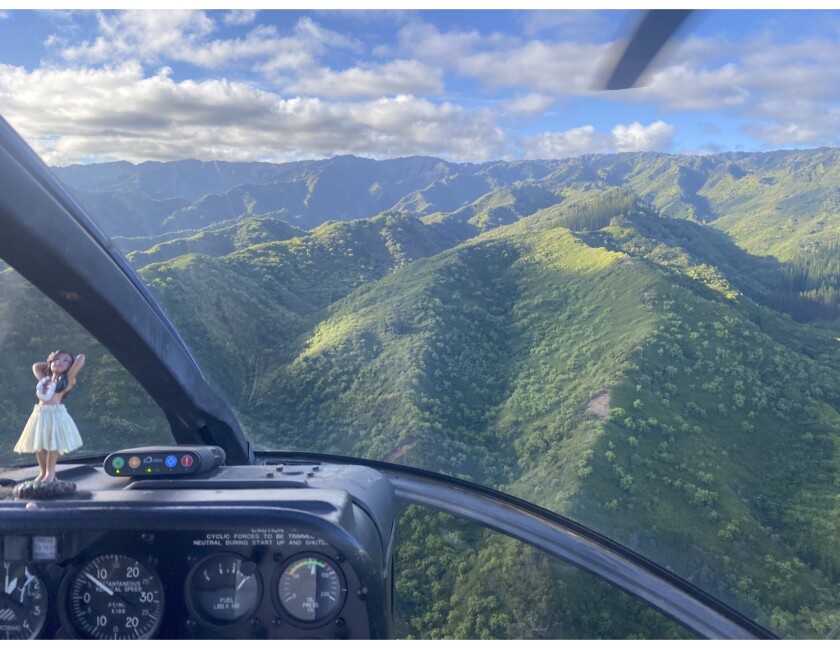
Five students from the Biology 350 class had the opportunity to fly via helicopter up to the Koloa mountain range with David Bybee, associate professor and director of sustainability for BYU–Hawaii. Bybee explained their goal was to collect data as part of a research project initiated by U.S. Army biologists with the construction of an exclusion fence in 2011 and BYUH became involved with the project in 2012.
It was the Army biologists who identified Koloa as an area with high endemism, or number of species that live only in Hawaii, explained Bybee. The land, however, is owned by the Church through Hawaii Reserves Inc.
The purpose of an exclusion fence is to prevent invasive species, specifically feral pigs, from entering Koloa because not only do pigs carry the seeds of invasive plants in their hair, but they also disrupt the land by digging, uprooting plants and creating mud pits, he said.
The invasive plants brought by pigs, such as strawberry guava, outcompete the native plants and drive down their population, Bybee explained. Over time, he said many forests on Hawaii have become dominated by introduced and invasive plants.
To prevent this from occurring in Koloa, he said the exclusion fence was erected and hunters were brought in to get rid of all the pigs on the mountain. Since then, Bybee said, no more pigs have been able to get in and the native plants have been allowed to recover.
The research project the Biology 350 students are participating in aims to track the recovery process of these native plants, he explained.
“I wanted to find something that was better than a three-hour lab [in a classroom],” said Bybee. “The Army doesn’t have the funding to do all the projects everywhere, so I said, ‘We can do this.’”
The largest group Bybee has taken to Koloa was 17 students, but only five students went up in 2021. Overall, he said the reception from the students has been very positive.
“I’ve had people say, ‘I never want to do that again, but I’m glad I did that once,’” he said. He also noted the quality of the data collected has been “good,” though there are some challenges with using students to conduct research for the project.
The main obstacle, he said, is every group that comes up is going up for the first time. By the time the students become accustomed to working on Koloa, it’s time to go home.

Trever Anderson, a junior biology major from Arizona who was one of the students who went to Koloa in Fall 2021, said, “Research is a lot more work than I was thinking. … It was fun to get out and see how much thought and effort goes into each study.”
He continued, “It was fun to meet the other students in the class outside of the business environment of the classroom.”
Maddy Worcott from Washington, another junior biology major and student who participated in the research trip, shared a similar sentiment. “It wasn’t what I expected,” she said.
“I did expect to get muddy, but there was a lot more mud and moisture than I [thought]. … I would have never had this experience if I had gone to college on the mainland.”
The trip entailed staying in a cabin high up on the mountain ridge in Koloa and traversing very narrow paths to get to the data collection site, she said. She, along with the others who made the trip, described the weather as damp and rainy with extremely muddy conditions.
Miles DeBry, a senior biology major from Salt Lake City, Utah, said, “The helicopter ride up was amazing,” but from that point on, he was soggy. However, he said the trip helped him get better at identifying plants.
Zaylie Evans, a senior biology major from Washington, said, “It was one of the craziest things I’ve ever done, but also one of the coolest.”
